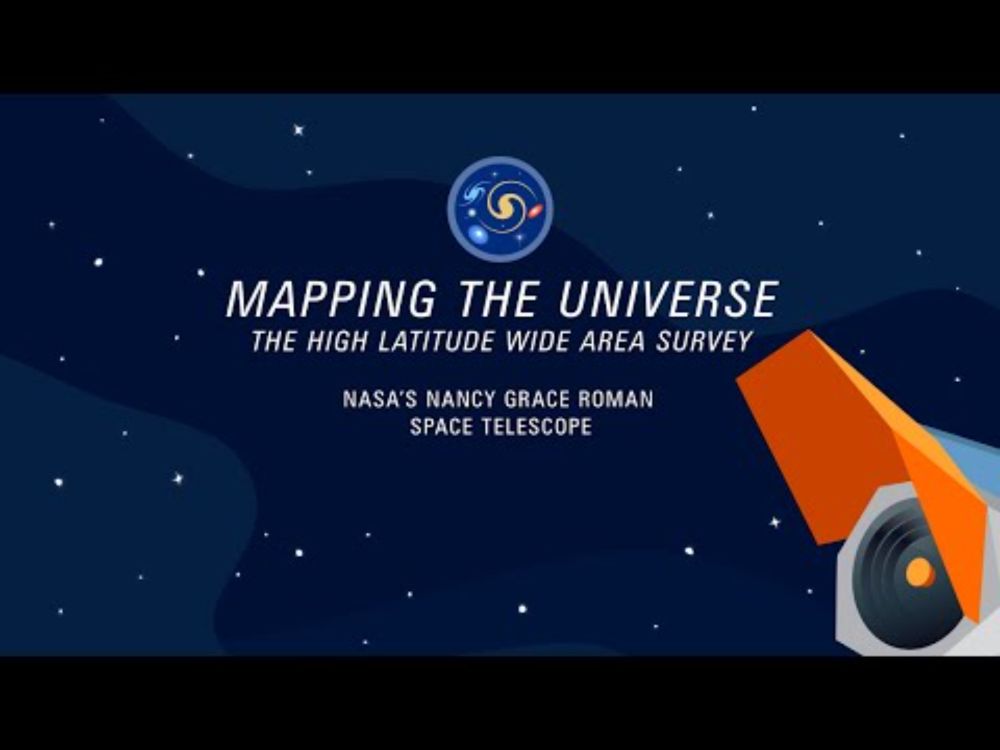
Logo of the Space Telescope Science Institute (STScI) over a vibrant cosmic background with the tagline "Expanding the Frontiers of Space Astronomy."
In the event of a U.S. government shutdown, STScI will extend the James Webb Space Telescope Cycle 5 proposal submission deadline for affected scientists. Details: https://www.stsci.edu/contents/news/jwst/2025/jwst-cycle-5-deadline-extension-in-case-of-government-shutdown #NASAWebb 🔭 🧪 ☄️
29.09.2025 20:15 — 👍 53 🔁 20 💬 0 📌 1

What do you do with 30,000 photographs?
Last year, the AAS donated over 30,000 born-digital photographs of member meetings from 2010 to 2024 to the @aip.bsky.social Niels Bohr Library & Archives. www.aip.org/library/ex-l... 🔭
29.09.2025 15:21 — 👍 11 🔁 2 💬 0 📌 1

A blue and black sky filled with brilliant stars covers the upper two-thirds of the vertical image. The stars are different sizes and shades of white, beige, yellow, and pale orange. Across the bottom third of the scene is a craggy, mountain-like vista of dust and gas with spire-like peaks and deep, misty valleys. The peaks appear in varying shades of orange, yellow, and brown. Above their soaring spires is a wispy, ethereal white cloud that stretches horizontally across the scene. What looks like steam appears to rise from the mountaintops and joins this cloud. At the top right corner, a swath of orange and brown structure cuts diagonally across the sky.
What appears to be a craggy, starlit mountaintop kissed by wispy clouds is actually a cosmic dust-scape being eaten away by the blistering winds and ultraviolet light of nearby, massive, infant stars. What else did #NASAWebb find in Pismis 24? https://bit.ly/4mr3cmt
04.09.2025 14:12 — 👍 178 🔁 76 💬 1 📌 6
As of July 2025, @mast-news.bsky.social contains nearly 300 million astronomical observations!
These new wallpaper images depict MAST’s View of the Sky. Download yours now: https://spacetelescope.github.io/mast-blog/mast-heatmap.html 🔭 🧪
21.08.2025 14:15 — 👍 43 🔁 14 💬 1 📌 0

At the center is a comet that appears as a teardrop-shaped bluish cocoon of dust coming off the comet’s solid, icy nucleus, which is almost white, all against a black background. The comet appears to be heading to the bottom left corner. About a dozen short, light blue diagonal streaks are scattered across the view, which are from background stars that appeared to move during the exposure because the telescope was tracking the moving comet.
Hubble observations of interstellar visitor 3I/ATLAS show that it looks like a comet. It has a teardrop-shaped cocoon of dust coming off a solid icy nucleus. The nucleus is roughly no wider than 3.5 miles (5.6 kilometers): go.nasa.gov/3UenJhD 🔭 🧪
07.08.2025 14:09 — 👍 101 🔁 30 💬 0 📌 1

what a week for our future✨ #HWO25
🧵coming soon🔭🧪☄️
@mmacgreg.bsky.social @hbhammel.bsky.social @bmacastro.bsky.social @dawngelino.bsky.social
@aussiastronomer.bsky.social @stsci.edu @aura-astronomy.bsky.social @justtheletteru.bsky.social @vividreams.bsky.social @leefeinberg.bsky.social +500 others
01.08.2025 20:27 — 👍 47 🔁 10 💬 4 📌 0
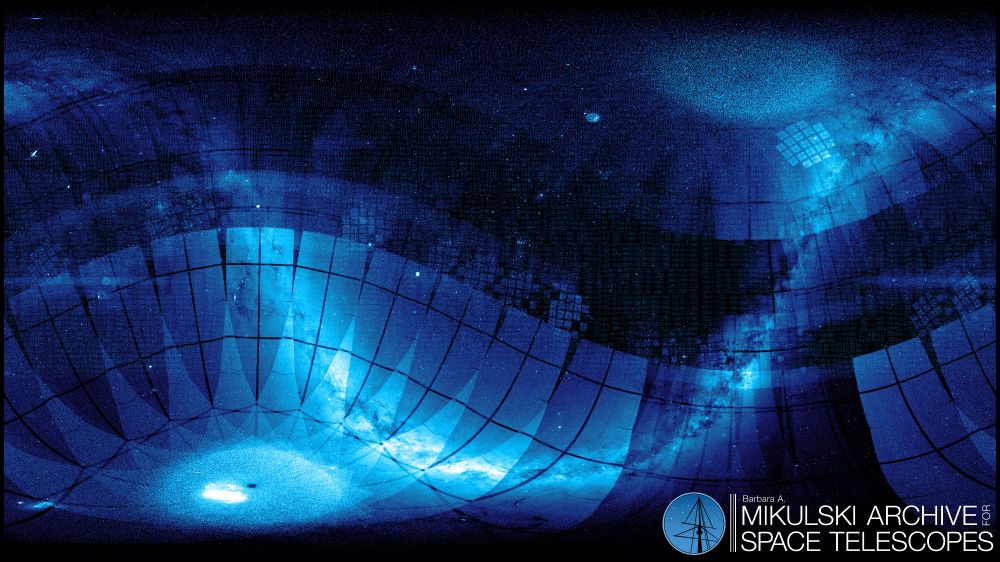
MAST background in "standard" sky projection, in hues of blue. Lighter blue areas mark lots of observations, while darker areas are less. Numerous patterns are visible, like the continuous viewing zones as ovals in the lower-left and upper right, patterns from overlapping TESS FFIs, or the Kepler footprint shapes stamped along the ecliptic and in the original Kepler field in the upper-right.

A grid of 16 images, 4x4, showing the sky background only for specific missions to get a sense of where in the sky and how much of it each mission observed to at least some depth.
Ever wondered what the "MAST Sky" looks like, from our ~6 PB of data spanning 3 decades...check this out! spacetelescope.github.io/mast-blog/ma...
Really fun project led by the very talented Julie Imig at MAST, showing mission coverage sky-projected! They make VERY good video backgrounds, btw. 🔭
31.07.2025 21:12 — 👍 40 🔁 9 💬 0 📌 2

A man on a stage in front of a slide about integral field spectroscopy.
Brian Fleming is giving us a grand tour of UV instrument possibilities. It is delightful. #HWO2025
It is useful to hear from an instrument designer what is possible/likely. Hopefully people are taking notes.
Remember, we can have gen 2 instruments for harder stuff.
29.07.2025 16:09 — 👍 9 🔁 3 💬 1 📌 0
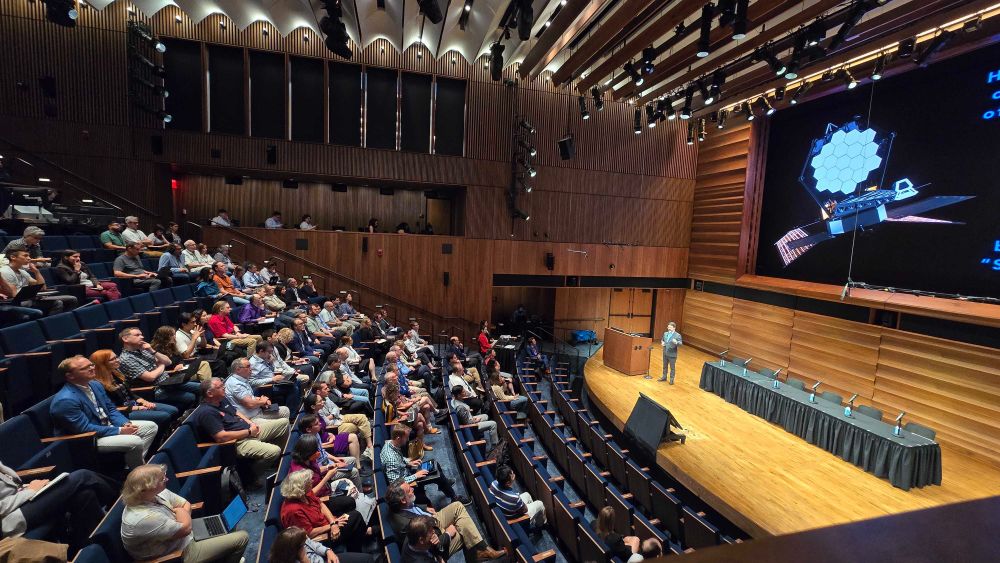
Audience seated in an amphitheater-style lecture hall, attending a presentation about space exploration, featuring visuals of a spacecraft on a large screen.
STScI's Jason Tumlinson spoke this morning about seeking our origins in the universe with the Habitable Worlds Observatory.
Scientists from around the world gathered in Washington, D.C., to discuss the search for signs of life on planets orbiting other stars. #HWO2025 🔭 🧪 ☄️
28.07.2025 14:27 — 👍 56 🔁 13 💬 0 📌 2

Presentation titled 'Understanding the Cosmic Build-up of Dust and Molecules with HWO-UV Spectroscopy' by Julia Roman-Duval, who is standing at the podium. An image of a galaxy is displayed on a large screen above the speaker, who is addressing an auditorium full of attendees.
Dr. Julia Roman-Duval delivers a talk on how the Habitable Worlds Observatory's anticipated ultraviolet capabilities will help astronomers understand the cosmic build-up of dust in the universe. Dr. Roman-Duval is the Hubble mission office head at STScI. 🔭 🧪 ☄️ #HWO2025 #HWO25
28.07.2025 16:48 — 👍 66 🔁 9 💬 0 📌 1
What we’ve learned after 35 years of NASA’s Hubble
NASA's Hubble turned 35 this year.
Even as funding threatens to end its operations, here are the highlights of what it's brought to our Universe.
bigthink.com/starts-with-...
#space #hubble #nasa #astro #physics #science
21.07.2025 15:11 — 👍 44 🔁 13 💬 2 📌 1

A section of the Cat’s Paw Nebula, a local star-forming region composed of gas, dust, and young stars. Four roughly circular areas are toward the center of the frame: a small oval toward the top left, a large circle in the top center, and two ovals at bottom left and right. Each circular area has a luminous blue glow, with the top center and bottom left areas the brightest. Brown-orange filaments of dust, which vary in density, surround these four bluish patches and stretch toward the frame’s edges. Small zones, such as to the left and right of the top-center blue circular area, appear darker and seemingly vacant of stars. Toward the center are small, fiery red clumps scattered among the brown dust. Many small, yellow-white stars are spread across the scene, some with eight-pointed diffraction spikes that are characteristic of Webb. A few larger blue-white stars with diffraction spikes are scattered throughout, mostly toward the top left and bottom right.
Hooray for three years of paw-sitively amazing #NASAWebb science! To celebrate, the telescope examined a singular “toe bean” of the Cat’s Paw Nebula, a massive star-forming region. Webb reveals gas, dust, and massive young stars: webbtelescope.pub/4khJK9T 🔭
Reply with an image of your pet’s paws! 🐾
10.07.2025 14:05 — 👍 288 🔁 60 💬 19 📌 11

Promotional image for Deep Space Dialogues featuring the Nancy Grace Roman Space Telescope, with a cosmic background. Event speakers include Dr. Kristen McQuinn and Dr. Robyn Sanderson.
JULY 16, 7 p.m. ET: #NASARoman is NASA’s next large strategic mission. STScI's Dr. Kristen McQuinn will tell us how Roman is set to chart the depths of space and time and forge the path towards Earth 2.0: www.youtube.com/live/2NpN8ae... 🔭 🧪
07.07.2025 16:58 — 👍 45 🔁 8 💬 0 📌 3
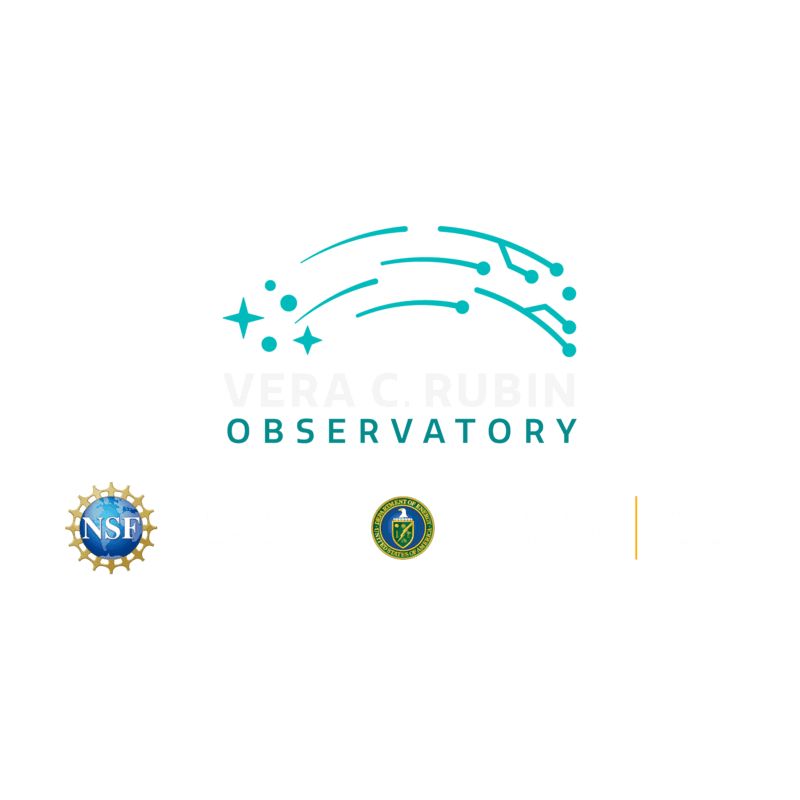
Skyviewer
Want to see NSF–DOE Rubin Observatory's Cosmic Treasure Chest for yourself?
Explore using Rubin's Skyviewer! There are billions of pixels to explore, and you might be the the first to lay eyes on a small, distant galaxy! #RubinFirstLook #CaptureTheCosmos
skyviewer.app
23.06.2025 16:30 — 👍 99 🔁 53 💬 2 📌 8
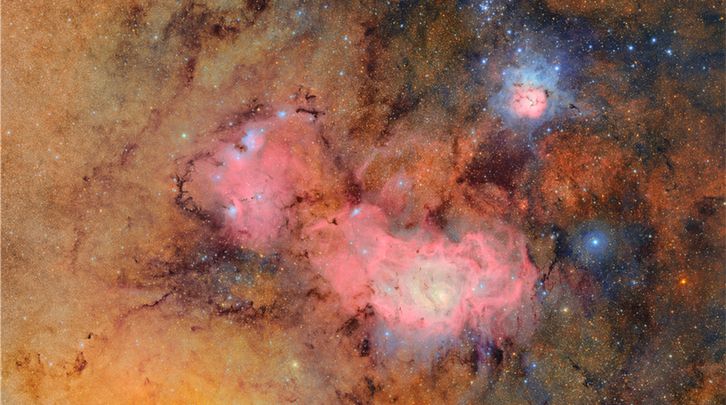
A cosmic tapestry of glowing tan and pink gas clouds with dark dust lanes. In the upper right, the Trifid Nebula resembles a small flower in space. Its soft, pinkish gas petals are surrounded by blue gas, and streaked with dark, finger-like veins of dust that divide it into three parts. It radiates a gentle, misty glow, diffuse and soft like the warmth of breath on a cold hand. To the lower left, the much larger Lagoon Nebula stretches wide like a churning sea of magenta gas, with bright blue, knotted clumps sprinkled throughout where new stars are born. Both nebulae are embedded in a soft tan backdrop of gas that is brighter on the left than on the right, etched with dark tendrils of dust and sprinkled with the pinpricks of millions of stars.
A new view of two old friends 🤩
Feast your eyes upon NSF–DOE Rubin's view of the Trifid & Lagoon Nebulae!
This image shows what makes Rubin unique: its wide field of view, & speed that allows it to take lots of big images quickly. 🔭🧪
rubinobservatory.org/news/rubin-first-look/trifid-lagoon
23.06.2025 15:57 — 👍 119 🔁 45 💬 3 📌 9


Meet Roman experts to learn more about the mission (and get some stickers)! 👾
Come visit the SOC (STScI) and SSC (IPAC) booths in Dena'ina Convention Center Exhibit Hall, Mon-Wed 9 AM - 6:30 PM, and Thurs 8:30 AM - 2 PM!
#AAS246 #ExpandOurView #NASARoman
09.06.2025 15:38 — 👍 16 🔁 4 💬 0 📌 0

🚨Get Ready for #AAS246!🚨
Follow us daily for your dose of #NASARoman at AAS: talks, posters, booths, sessions (and stickers) —we’ve got it all. 🔭📡📸
06.06.2025 14:35 — 👍 9 🔁 5 💬 1 📌 0

A group of 12 people stand on the right side of the photo, smiling at the camera. To their left is a sign on the STScI building that says "Space Telescope Science Institute, Operated by AURA for NASA."
We’re thrilled to welcome the 32nd cohort of the Space Astronomy Summer Program (SASP) at STScI, now under the leadership of our new chair, John Maple. 🔭 🧪
04.06.2025 13:38 — 👍 55 🔁 3 💬 0 📌 0

🚀The #NASARoman Coronagraph Instrument will demo cutting-edge tech to mature NASA’s ability to build a next-generation exoplanet characterization mission.
Submit tech and science observing ideas by Aug 7 to shape the Community Participation Program.
🔗https://bit.ly/45Bv0i8
04.06.2025 18:29 — 👍 6 🔁 2 💬 0 📌 2
In addition to wonders of the distant universe, #NASARoman will explore our cosmic backyard, the Milky Way galaxy. Discover our home in the universe with Roman. 🔭 🧪
21.05.2025 10:50 — 👍 53 🔁 14 💬 1 📌 2
🚀We are ready for launch...of the official social media account for doing science with #NASARoman!
This account will keep researchers informed about opportunities for preparing for and participating in Roman science.
Follow us to stay involved. #ExpandOurView
08.05.2025 20:17 — 👍 19 🔁 6 💬 1 📌 4
YouTube video by Space Telescope Science Institute
Nancy Grace Roman Space Telescope: Mapping the Universe
Astronomers will use #NASARoman to improve our understanding of the universe. See the bigger picture with Roman. Credit: NASA, STScI, Caltech/IPAC. 🔭 🧪
29.04.2025 17:04 — 👍 55 🔁 15 💬 1 📌 1
YouTube video by Space Telescope Science Institute
Nancy Grace Roman Space Telescope: Tracking Change Over Time
#NASARoman will track cosmic changes over time in unprecedented scale and clarity. Discover the dynamic universe with Roman. Credit: NASA, STScI, Caltech/IPAC. 🔭 🧪
02.05.2025 15:12 — 👍 41 🔁 11 💬 1 📌 0
Experience the Cosmic Cliffs like never before! #NASAWebb’s iconic image of dusty “mountains” and “valleys” is featured in a new 3D visualization from NASA’s Universe of Learning: webbtelescope.pub/4jRHIh9 🔭 🧪
07.05.2025 18:02 — 👍 567 🔁 109 💬 11 📌 7
The Last Word On Nothing | Guest Post: A golden rule for publicity seeking aliens
Thoughts on last week's alien-finding kerfuffle, including mention of spaghetti, and a golden rule for institutional press releases. Let me know what you think: www.lastwordonnothing.com/2025/04/21/a... (PS Thanks to @annfinkbeiner.bsky.social & LWON for hosting me) 🔭 🧪
21.04.2025 08:36 — 👍 97 🔁 25 💬 9 📌 5
The American Astronomical Society is gravely concerned by the deep cuts to NASA science funding reported to be in the draft President’s Budget Request for Fiscal Year 2026. Read more here: aas.org/press/aas-st... and take action now: aas.org/urge-nasa-su...
11.04.2025 20:04 — 👍 264 🔁 141 💬 4 📌 9
YouTube video by Space Telescope Science Institute
Sharing Astronomy with 100,000 of You! #YouTubeCreatorAwards
We recently surpassed 100,000 subscribers on our YouTube channel, and received the Silver Creator Award. Everyone in STScI's Office of Public Outreach had a part in making our YouTube channel so successful.
Let us be a part of your adventure through the universe, subscribe to our YouTube page. 🔭 🧪
14.03.2025 14:44 — 👍 65 🔁 7 💬 1 📌 1
YouTube video by Space Telescope Science Institute
"Transients from Space" Science Workshop
What goes “bump” in … space? Watch as scientists who attended the “Transients from Space” science workshop in early March explain fleeting events in space and why they are interesting objects to study.
Credit: NASA, D. Kirshenblat, Q. Hart, T. Rhue (STScI). 🔭 🧪
21.03.2025 14:33 — 👍 30 🔁 8 💬 2 📌 0
YouTube video by European Space Agency, ESA
Euclid's first deep dive into the Universe
@esa.int is about to release the first data from its EUCLID telescope - looking forward to getting my hands on it. Watch the launch here: youtu.be/rXCBFlIpvfQ?...
19.03.2025 11:02 — 👍 31 🔁 9 💬 3 📌 0

The first batch of survey data from @esa.int's Euclid mission dropped earlier today.
This is a portion of the Deep Field Fornax, a focused look at the region of space in the Fornax constellation.
Based on the press release, I estimate that there are more than TWO MILLION galaxies in this image.
19.03.2025 23:14 — 👍 317 🔁 55 💬 19 📌 6
Mayor-Elect of New York City
Former US Congressman, Proud RINO, husband, and military man. Fighting the MAGA brain worms daily!
Adamkinzinger.komi.io
Adamkinzinger.substack.com
Dad. Author of the Cosmic Collisions books. Astrophysicist and Citizen Science fanatic @nasa. www.marckuchner.com
Still hacking away! Mostly cover science but find the whole world interesting. Will Turn Phrase For Food. Washington Post 1990-present, Miami Herald 1982-1990.
Working Group on Star Names (WGSN) of the International Astronomical Union (IAU). Maintained by @susanne-m-hoffmann.bsky.social @msfa94.bsky.social
Dad, husband, host @Marketplace. IPAs. Soccer referee, trail runner, mountain biker. Veteran. kryssdal@marketplace.org
Through its materials, resources, and programs, the ASP promotes public science interest, engagement, and literacy through the awe and wonder of astronomy and related fields. Founded in 1889, the ASP is the first national astronomy organization in the US.
Astrophysics PhD Candidate ✨ studies black holes and galaxy evolution 🌌Science Communicator (find me other places at “Space According to Skylar”)
Astronomy Professor at Harvard. Founder of glue solutions, inc. & http://path-to.org. Views are my own.
NancyRomanSci is managed by the Roman Science Centers and provides researchers with the most up-to-date information related to doing science with NASA's Nancy Grace Roman Space Telescope
Mobilizing the fight for science and democracy, because Science is for everyone 🧪🌎
The hub for science activism!
Learn more ⬇️
http://linktr.ee/standupforscience
Ghetto Carrie Bradshaw 💅🏽 | PoliSci BA 🎓 | Author & Passive Income Mentor | eBooks, Resell Kits, & Templates ⬇️ Launch your biz today
https://stan.store/gxldsociety/p/red-white-and-fcked-the-real-story-of-america
Choose a better internet where privacy is the default. Start protecting your personal information online with Proton Mail, Proton VPN, Proton Drive, Proton Pass, Proton Wallet.
For more frequent updates, follow us here: reddit.com/r/ProtonMail
Head of Partnerships and Development @consortium.lgbt | Chair @proudchangemakers.bsky.social | LGBTQ+ Columnist Exposed Magazine
#LGBWithTheT Proud Queer 🏳️🌈🏳️⚧️
www.heatherpaterson.co.uk
Epidemiologist. Professor Emerita. Blue in Arizona, forged in the Burgh.
When you’re going through hell, keep going. (Churchill)
1elizabethtjacobs1@gmail.com
@defendpublichealth.bsky.social
https://www.defendpublichealth.org
Doting grandmother, among other things.
Former public defender, now U.S. Congresswoman, proudly serving the good people of Texas’ 30th Congressional District. ✊🏾





















